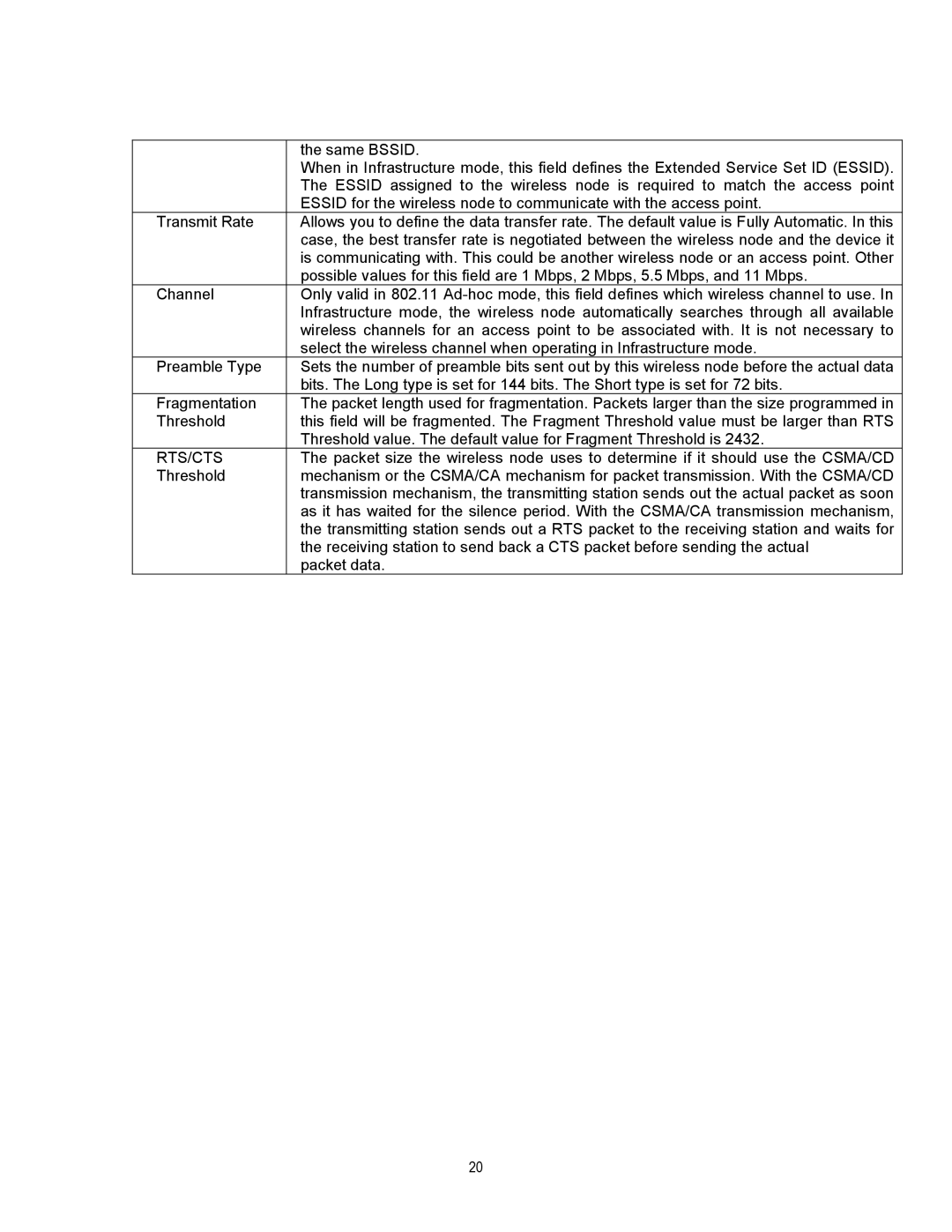| the same BSSID. |
| When in Infrastructure mode, this field defines the Extended Service Set ID (ESSID). |
| The ESSID assigned to the wireless node is required to match the access point |
| ESSID for the wireless node to communicate with the access point. |
Transmit Rate | Allows you to define the data transfer rate. The default value is Fully Automatic. In this |
| case, the best transfer rate is negotiated between the wireless node and the device it |
| is communicating with. This could be another wireless node or an access point. Other |
| possible values for this field are 1 Mbps, 2 Mbps, 5.5 Mbps, and 11 Mbps. |
Channel | Only valid in 802.11 |
| Infrastructure mode, the wireless node automatically searches through all available |
| wireless channels for an access point to be associated with. It is not necessary to |
| select the wireless channel when operating in Infrastructure mode. |
Preamble Type | Sets the number of preamble bits sent out by this wireless node before the actual data |
| bits. The Long type is set for 144 bits. The Short type is set for 72 bits. |
Fragmentation | The packet length used for fragmentation. Packets larger than the size programmed in |
Threshold | this field will be fragmented. The Fragment Threshold value must be larger than RTS |
| Threshold value. The default value for Fragment Threshold is 2432. |
RTS/CTS | The packet size the wireless node uses to determine if it should use the CSMA/CD |
Threshold | mechanism or the CSMA/CA mechanism for packet transmission. With the CSMA/CD |
| transmission mechanism, the transmitting station sends out the actual packet as soon |
| as it has waited for the silence period. With the CSMA/CA transmission mechanism, |
| the transmitting station sends out a RTS packet to the receiving station and waits for |
| the receiving station to send back a CTS packet before sending the actual |
| packet data. |
20
